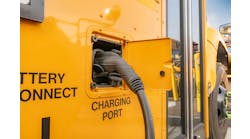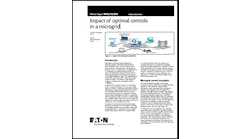Over the next decade, Mike Bakas, executive vice president at Ameresco, thinks that energy business models will evolve significantly. As a lead up to Microgrid 2023, Bakas and Elisa Wood, editor-in-chief of Microgrid Knowledge, recently discussed how these changes will impact the microgrid market.
One of the biggest impacts Bakas sees is that the current energy-as-a-service (EaaS) business model will evolve.
Energy-as-a-service is a unique delivery vehicle for energy services, Bakas said. He explained that with EaaS, a third party, such as Ameresco, develops, designs, owns and operates an energy system that delivers energy to the customer.
In this scenario, the customer doesn’t have to worry about out of budget capital allocation, Bakas said. “All they do is continue to receive the energy that they need to function and to grow their system.”
Wood noted that EaaS is a great way to de-risk a project.
Bakas agreed. He added that EaaS “allows that customer to stay out of the utility business, which typically is not core to them.”
Resiliency as a bolt on
Bakas believes that energy-as-a-service will soon evolve to provide not only the energy, but some level of guaranteed resilience as well. “Resiliency will be a bolt on, or expansion of that service,” Bakas said, and it will likely be achieved through N-plus-one configurations or redundancy.
For example, developers could create campus environments that certain mission-critical organizations would be attracted to because of the level of guaranteed resiliency that’s offered.
Bakas noted that the risks associated with this new model won’t be for developers that are faint of heart. However, he said, “it would not surprise me at all to see [the commoditization of resilience] become more mainstream over the next decade.”
More sustainable microgrids
Bakas also believes that sustainable energy resources will play a bigger role in microgrids in the coming years, thanks to continued improvements in renewable and storage technologies.
“Advanced energy storage will be a game changer in the microgrid space,” Bakas said. “With the best energy storage, we can seamlessly island from the grid with the batteries providing black start capability and other reliability services. We can also enable optimization of the distributed resources during an outage to ensure the cleanest solution.”
Learn more about microgrids at Microgrid 2023: Lights On!, which will be held May 16-17 in Anaheim, California. Mike Bakas will participate in a panel called Microgrid 101: A Primer for Those New to Microgrids.








